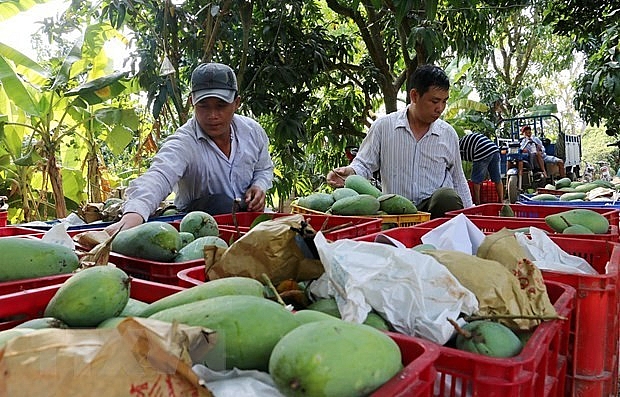
Ministry targets 650 million USD from mango exports by 2030
Latest
 |
| Mangoes harvested in the Mekong Delta province of An Giang. (Photo: VNA) |
The mango growing area currently stands at some 87,000 ha, 48 percent of which is in the Mekong Delta.
Viet Nam shipped over 180 million USD worth of mangoes abroad last year, accounting for only 1.15 percent of the world’s total.
China was the largest market of Viet Nam, with nearly 152 million USD, or 83.9 percent of the total, followed by Russia, the US, the Republic of Korea, the EU, Australia, and Japan, according to MARD’s Agro Processing and Market Development Authority.
To achieve the export target, Deputy Director of MARD’s Plant Protection Department Nguyen Thi Thu Huong called on the ministry to upgrade her department’s technical centres so as to carry out studies helping to remove technical barriers, seek new markets, and conduct pre-export checks.
She also recommended MARD digitalise its databases on farming zones, processing establishments, and packaging facilities.
While localities should enhance connectivity between cultivation areas and increase training for local staff in charge of farming techniques, businesses need to seriously comply with regulations from both importing countries and Viet Nam, boost production cooperation, maintain constant monitoring to ensure sufficient supply and quality materials, and remain updated on export information, Huong added.
Deputy Minister Tran Thanh Nam said having 48 percent of the mango growing area concentrated in the Mekong Delta is favourable in improving quality and meeting the requirements of importing markets.
However, as the area meeting VietGAP and GlobalGAP standards makes up just 3.8 percent of the Mekong Delta’s mango growing area, it is necessary to boost the adoption of these standards, he noted.
Nam also urged provinces and cities in the Mekong Delta to work to improve quality in every step, from farming and harvesting to preservation, while strengthening links in mango sales.
In particular, they should identify target markets and work with enterprises and cooperatives to help farmers align cultivation practices with international standards.
























